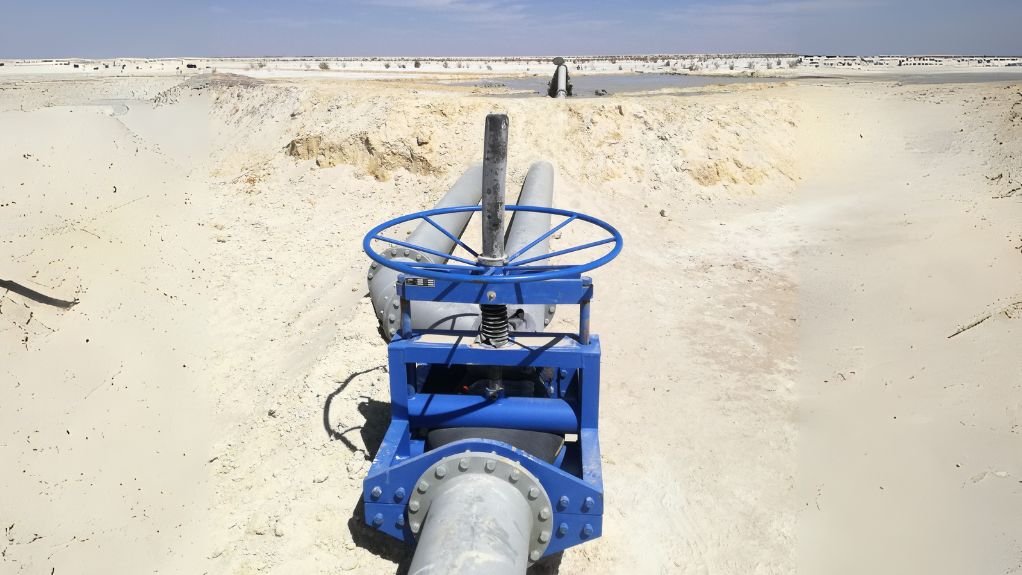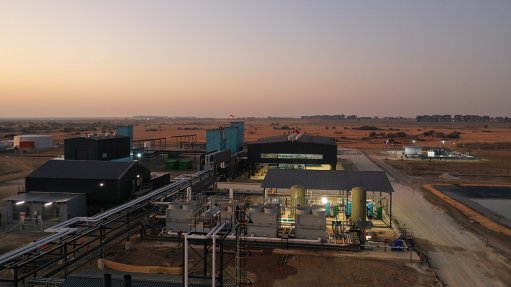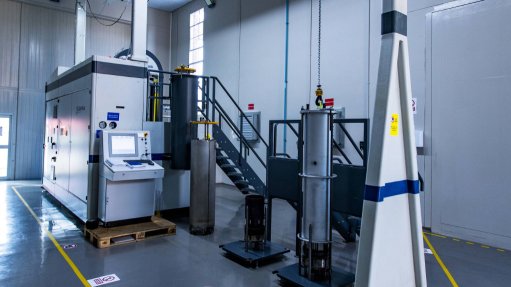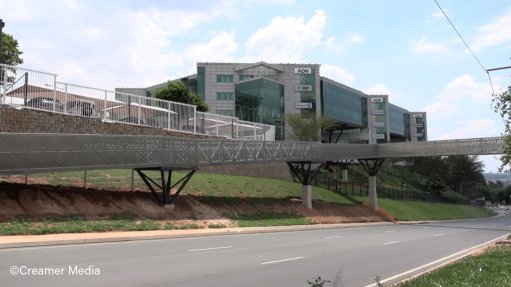Collaborative approach, valve innovation improving performance


VALVE RELIABILITY Robust valves help prevent leaks and breakdowns, which is important for water conservation in mines that operate under strict water licence conditions
As mining operations extend into harsher and more remote environments in their search for new mineral discoveries, the role of high-performance, durable and locally made valves is becoming more important, says industrial valve manufacturer Dynamic Fluid Control – South Asia, Middle East and Africa (DFC SA-MEA) project manager Julius Frauendorf.
The company is part of a broader network of local manufacturers working closely with the mining sector to develop fit-for-purpose valve solutions, with Frauendorf stating that DFC SA-MEA has decades of experience working alongside mining houses to adapt to changing requirements and harsh conditions.
The demand for specialised valve solutions is rising as new mines are developed and existing operations expand across the African continent. Mines require systems engineered for increased uptime, especially in critical applications where valves must endure intense wear, high pressures and exposure to corrosive fluids.
Innovation in design, materials and coatings has helped improve valves’ reliability under these demanding conditions, adds Frauendorf.
Modern valve designs are rigorously engineered and tested to lower flow path disruption, ensuring optimal performance. Materials are carefully selected for their durability, chemical resistance and mechanical strength. As a result, many products now incorporate advanced features such as custom-formulated elastomers, hard-facing technologies and specialised wear-resistant components tailored for demanding service conditions.
“The local valve manufacturing sector has a long history with mining, which has allowed manufacturers to improve reliability, extend valve life and make quality improvements through years of product development and testing,” he says.
One of the biggest advantages of local manufacturing is the availability of skills, product knowledge and technical support. Consequently, mines that work with local valve companies can access replacement parts quickly, with expert assistance available without long delays, Frauendorf adds, noting that this is particularly important in high-wear applications that require frequent maintenance or part replacement.
By providing localised services and technicians, valve manufacturers are also on hand to examine wear patterns and introduce new product developments that extend the time between repairs, he says.
Further, the close working relationship between local valve manufacturers and mining operations has also created a knowledge base that supports quicker problem-solving and better planning. This could facilitate local companies’ machining specific items, such as shafts or spindles in a matter of hours, when required, he explains.
Strong relationships between local valve suppliers and mines also support shared testing and development, helping to refine products over time.
With detailed knowledge of mine schedules and equipment consumption, local manufacturers can also forecast stock needs and respond to emergencies more effectively. This level of support is important for mines under pressure to reduce downtime and improve reliability, says Frauendorf.
Local Capability
South African valve manufacturers, particularly those represented by the Valve and Actuator Manufacturers Cluster of South Africa (VAMCOSA), produce a variety of valve types to meet different mining conditions.
These include ball valves, high-wear butterfly valves, rubber-lined gate valves, ball check valves, pinch valves, knife gate valves, air valves, diaphragm valves, diverter valves and plug valves.
Every type is offered in different materials and linings, depending on the media and the severity of the application.
Several VAMCOSA members have also adopted advanced coatings and plating for high-pressure applications, with chrome plating and heat treatment being applied to valve components to increase wear resistance and extend service life.
In addition, new features, such as wear sensors embedded in pinch valve sleeves, are providing mine operators with early warnings of wear levels, consequently allowing for planned replacement rather than emergency shutdowns.
Mines using these upgraded valves have reported positive feedback in terms of lower maintenance, fewer breakdowns and improved life-cycle costs, notes Frauendorf.
However, he says support does not end with supply and design, but extends to training and maintenance services which are a key part of local manufacturers’ offerings, with some companies offering classroom and on-site training programmes to help mine personnel understand valve performance, maintenance needs and wear patterns.
In addition, planned maintenance helps to ensure parts are available ahead of shutdowns and contributes valuable feedback for product improvements, while monitoring performance during trial phases is also essential for data collection and design optimisation.
Valve design is increasingly contributing to sustainability in mining operations. Robust, high-quality valves help prevent leaks and equipment failures, which is essential for conserving water, particularly in mines operating under strict water restrictions.
Further, full-bore valve designs with low friction losses improve energy efficiency by enabling smoother fluid flow through the system, Frauendorf explains.
Article Enquiry
Email Article
Save Article
Feedback
To advertise email advertising@creamermedia.co.za or click here
Comments
Press Office
Announcements
What's On
Subscribe to improve your user experience...
Option 1 (equivalent of R125 a month):
Receive a weekly copy of Creamer Media's Engineering News & Mining Weekly magazine
(print copy for those in South Africa and e-magazine for those outside of South Africa)
Receive daily email newsletters
Access to full search results
Access archive of magazine back copies
Access to Projects in Progress
Access to ONE Research Report of your choice in PDF format
Option 2 (equivalent of R375 a month):
All benefits from Option 1
PLUS
Access to Creamer Media's Research Channel Africa for ALL Research Reports, in PDF format, on various industrial and mining sectors
including Electricity; Water; Energy Transition; Hydrogen; Roads, Rail and Ports; Coal; Gold; Platinum; Battery Metals; etc.
Already a subscriber?
Forgotten your password?
Receive weekly copy of Creamer Media's Engineering News & Mining Weekly magazine (print copy for those in South Africa and e-magazine for those outside of South Africa)
➕
Recieve daily email newsletters
➕
Access to full search results
➕
Access archive of magazine back copies
➕
Access to Projects in Progress
➕
Access to ONE Research Report of your choice in PDF format
RESEARCH CHANNEL AFRICA
R4500 (equivalent of R375 a month)
SUBSCRIBEAll benefits from Option 1
➕
Access to Creamer Media's Research Channel Africa for ALL Research Reports on various industrial and mining sectors, in PDF format, including on:
Electricity
➕
Water
➕
Energy Transition
➕
Hydrogen
➕
Roads, Rail and Ports
➕
Coal
➕
Gold
➕
Platinum
➕
Battery Metals
➕
etc.
Receive all benefits from Option 1 or Option 2 delivered to numerous people at your company
➕
Multiple User names and Passwords for simultaneous log-ins
➕
Intranet integration access to all in your organisation

















